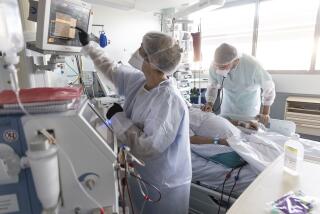Monopoly, video games, study groups: How COVID-19 is spreading at USC

A game of Monopoly among friends. A study group with a few classmates. Dinner while chatting in the comfort of their apartment.
These are the small group gatherings that are the source of the ongoing surge of COVID-19 infections among students at USC.
As the university enters its second week of classes, it’s not large shoulder-to-shoulder parties that are the top worry. It’s the common, day-to-day interactions among groups of 10 or fewer friends and housemates who live in thousands of privately owned apartments and houses that surround the campus.
The situation underscores the challenges other colleges in California face as classes resume this fall, including UCLA, where classes begin Sept. 28.
Dr. Sarah Van Orman, chief health officer for USC Student Health, said that since her last update on Monday, 104 new cases of coronavirus have been confirmed — including the first three on campus — marking 147 total cases this week.
The cases represent a tiny fraction in a county where more than 1,636 new cases and 38 deaths were reported on Thursday alone. But there has been growing concerns nationally of campuses being particularly ripe for COVID-19 spread.
Of the new infections at USC, three students tested positive after getting together to play Monopoly. Four more were infected as they gathered to study.
“Some of what’s difficult is while we hear reports of large parties here and there, that’s actually not the majority of the situations where we are encountering students who are infected,” Van Orman said.
“It is five to 10 people getting together sharing a meal; it’s study groups and board games.”
Van Orman said problems occur because students in these smaller settings will often eat and drink together, thus shunning COVID-19 protections such as facial coverings and social distancing.
The community spread then takes place when these students who congregated to play video or board games then return to an apartment shared with four to six others.
“One case can lead to multiple infections because of the larger groups in which students live,” Van Orman said.
Van Orman is aware many USC students live in apartments they share with groups of three to six students, many with even higher numbers.
She advises those students to “make a commitment to each other” to wear masks and socially distance when they leave their immediate bubble and to consider lower-risk activities that can be held outside.
“When you have 10 people packed into an apartment eating and drinking, it’s very easy [for the disease] to spread,” she said.
The COVID-19 cases has taken place despite USC offering only online education.
There are about 700 students living on campus in dorms and school property, but of that group, only three positive tests were confirmed and that was within the last 24 hours.
As of Saturday, the USC Health Center has conducted 4,241 tests with a 5.2% positive rate among students.
On Monday, USC issued a community health advisory in which Van Orman spoke of an “alarming increase” in the rise of COVID-19 cases in students.
That day, 43 cases were announced.
“The numbers were lower on Monday, but we were all concerned that this was the direction we were heading in, and I’m not surprised with where the numbers are right now,” Van Orman said.
Of the 104 new cases since, eight included members of the school’s football and men’s water polo teams.
Workouts in both sports have been suspended until at least Monday.
Of the 104 positive tests, 73 cases involved students who showed some signs of COVID-19, while 31 were asymptomatic.
Van Orman said it was incumbent on students to change their behavior because there were two paths in which the spread would result.
“We are hopeful that if we can continue with the intensive testing and really get the message out to the students and the community about safety that we can start to see the numbers decline,” she said.
More to Read
Start your day right
Sign up for Essential California for news, features and recommendations from the L.A. Times and beyond in your inbox six days a week.
You may occasionally receive promotional content from the Los Angeles Times.







